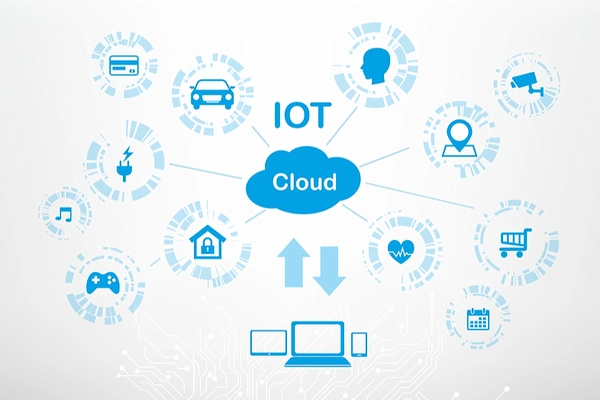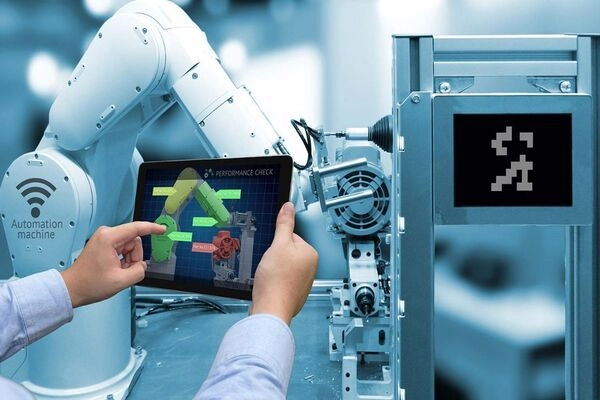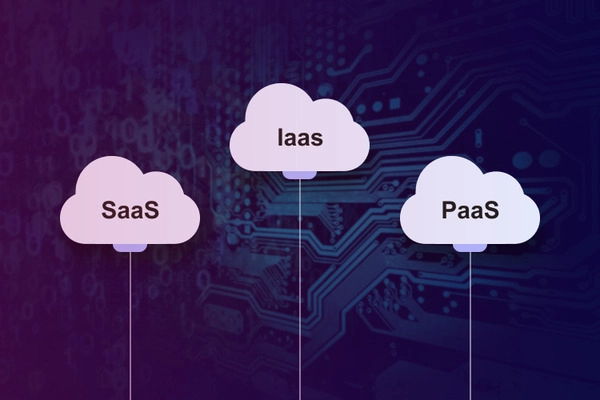As businesses increasingly rely on data and interconnected devices, Cloud IoT is becoming a key technological foundation in digital transformation. By combining the power of cloud computing with Internet of Things (IoT) systems, enterprises can manage millions of devices, process real-time data, and optimize operations. This article will help you understand what Cloud IoT is, how it works, common models, and the benefits it brings to organizations.
What is Cloud IoT?
Cloud IoT is the integration of cloud computing and the Internet of Things, enabling devices to connect, collect, and share data intelligently through the cloud. Instead of storing data locally, IoT devices transmit information to the cloud, where it is processed, analyzed, and transformed into valuable insights for businesses.

The strength of Cloud IoT lies in its ability to centrally manage millions of devices, enable flexible scalability, reduce operational costs, and support real-time, data-driven decision-making. As a result, businesses can improve efficiency, enhance customer experiences, and optimize production workflows.
How does Cloud IoT work?
To understand Cloud IoT, it’s essential to look at the coordination between IoT devices, connectivity systems, and cloud platforms. Cloud IoT operates through a sequence of processes that include data collection, data transmission, storage, analysis, and feedback.

When IoT devices collect data from the environment or from users, they transmit this information to the cloud through WiFi, mobile networks, or other communication protocols. On the cloud platform, the data is processed using advanced analytics tools. Finally, businesses can view insights on dashboards, receive instant alerts, or set up automated rules.
Thanks to this flexible and efficient workflow, Cloud IoT has created new opportunities for organizations to improve operational performance.
Common types of Cloud IoT
To meet different needs, Cloud IoT can be deployed through various cloud models. Depending on scalability requirements and security demands, businesses can choose the most suitable cloud type. Below are four widely adopted Cloud IoT models.

Public Cloud
The Public Cloud model is provided by major cloud service vendors such as Google Cloud, AWS, and Azure. Businesses simply subscribe to the service without having to invest in physical server infrastructure.
Its key advantages include low cost, strong scalability, and ease of deployment. However, the Public Cloud may not be ideal for organizations with strict data-security requirements or those needing full control over their infrastructure.
Private Cloud
A Private Cloud is a dedicated cloud environment that a business builds internally or commissions a provider to deploy exclusively for them.
Organizations using Private Cloud can maintain full control over their data, configure systems flexibly, and ensure the highest level of security. This model is well-suited for large enterprises, government agencies, and financial institutions where data sensitivity is critical.
Hybrid Cloud
The Hybrid Cloud model combines both Private Cloud and Public Cloud to leverage the strengths of each. Critical data is stored in the Private Cloud, while common applications or workloads requiring rapid scalability are hosted on the Public Cloud.
Hybrid Cloud offers exceptional flexibility, cost optimization, and enhanced data safety, making it an ideal choice for businesses undergoing digital transformation.
Community Cloud
A Community Cloud is shared by multiple organizations that have similar needs or operate within the same sector, such as hospitals, schools, or government agencies.
Organizations within the same community can share infrastructure, data, and applications, helping reduce costs, enhance collaboration, and maintain the necessary level of security.
Benefits of Cloud IoT for Businesses
The adoption of Cloud IoT brings significant advantages across nearly all industries. Each benefit contributes to higher operational efficiency, reduced costs, and improved competitiveness. Below are the key advantages Cloud IoT offers.

Easy Accessibility and Flexible Scalability
With Cloud IoT, businesses can manage devices from anywhere via the Internet. As the number of devices grows, the cloud system can scale rapidly without requiring upgrades to local hardware. This allows companies to adapt easily to growth and fluctuations in demand.
Enhanced Collaboration and Data Sharing
Cloud IoT enables real-time data synchronization, allowing internal teams and partners to access, share, and analyze information more efficiently. This accelerates decision-making, reduces errors, and improves coordination across the organization.
Cost Savings and Reduced Paperwork
By using Cloud IoT, businesses no longer need to invest in physical servers or maintain large technical teams. Automated processes also significantly reduce manual tasks and paperwork. As a result, operational costs decrease while accuracy and productivity increase.
Fast Data Recovery in Case of Incidents
Cloud IoT typically includes built-in backup and automatic recovery solutions. When system failures or security issues occur, data can be restored within minutes. This helps businesses avoid operational disruptions and minimize losses.
Real-World Applications of Cloud IoT
Cloud IoT has been implemented across a wide range of industries. Before exploring specific examples, it’s important to understand that its flexibility makes it suitable for virtually any sector—from manufacturing to healthcare. Below are some of the most notable applications of Cloud IoT in daily life and business.

- Manufacturing (Smart Manufacturing): Monitoring production lines, detecting faults, enabling predictive maintenance, and optimizing operations.
- Smart Agriculture: Tracking soil moisture, weather conditions, and irrigation levels to improve crop productivity.
- Healthcare: Wearable devices collect patient health data and upload it to the cloud for remote monitoring by doctors.
- Smart Homes: Controlling household appliances, security systems, and lighting through applications connected to Cloud IoT.
- Logistics: Tracking vehicle locations, monitoring cargo conditions, and optimizing delivery routes.
- Smart Cities: Managing traffic systems, monitoring environmental conditions, and optimizing urban energy usage.
These applications demonstrate that Cloud IoT is not just a technological solution but a foundational platform driving innovation across many sectors.
Challenges in Implementing Cloud IoT
Despite its many advantages, deploying Cloud IoT still poses several challenges. Before diving into the specifics, businesses need to understand that Cloud IoT is a large, interconnected system involving devices, software, networks, and security. Building and operating such a system requires a clear strategy and a capable technical team.
Some common challenges include:
- Data Security: Cloud IoT processes massive amounts of data from millions of devices, making it a potential target for cyberattacks.
- Device Compatibility: Many IoT devices use different communication protocols, which can make integration difficult.
- Initial Deployment Costs: Although cost-effective in the long term, deploying IoT and connecting it to the cloud still requires significant upfront investment.
- Network Latency: For applications requiring instant responses, delays in transmitting data to the cloud can affect operational efficiency.
Cloud IoT Service Models
To deploy Cloud IoT effectively, businesses need to choose the appropriate cloud service model. Each model offers different levels of control and flexibility. Before diving into the specifics, it’s important to note that Cloud IoT commonly uses three main service models — IaaS, PaaS, and SaaS. Each model addresses different needs, ranging from infrastructure management and application development to accessing software online.

IaaS – Infrastructure as a Service
IaaS provides cloud-based infrastructure such as servers, storage, and networking. In the context of Cloud IoT, IaaS allows businesses to store and process IoT data without building on-premises data centers.
- Advantages: flexible, easily scalable, and reduces initial investment costs.
- Disadvantages: requires a technical team for configuration and management.
PaaS – Platform as a Service
PaaS offers a development environment for IoT applications, including tools, libraries, and database management systems. With PaaS, developers can build Cloud IoT applications faster without worrying about underlying infrastructure. PaaS also supports machine learning, data analytics, and API development for device connectivity.
SaaS – Software as a Service
SaaS delivers online applications based on Cloud IoT. Users can access software simply by logging in, without installation or maintenance. Examples include IoT device management platforms, health monitoring systems, and logistics management software. SaaS is ideal for businesses seeking quick deployment, low cost, and minimal technical resources.
Cloud IoT has become a core solution that helps businesses optimize processes, enhance efficiency, and drive digital transformation. With flexible scalability, real-time data sharing, and reliable recovery in case of incidents, Cloud IoT delivers tangible value across industries. By selecting the right service model and implementing it effectively, businesses can fully leverage the potential of this platform.
